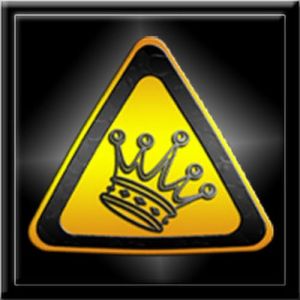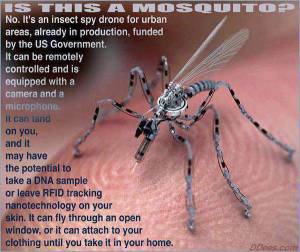
Household Inventions
“The real voyage of discovery consists not in seeking new landscapes, but in having new eyes.”
Marcel Proust
Most inventions are the results of exploration, experimentation, blood, sweat and tears, and lots of sleepless nights. But there are some moments of serendipity, those “Hmm. That’s strange…” discoveries that are not lightly tossed aside but seen for their potential. It’s taking the lemons life has thrown their way, tossing in a wet rag and a few copper and zinc coins, and coming up with a battery.
Here’s a line-up of a few of those wet rag-tossers of household products:
Teflon
Who: Roy Plunkett, young chemist for DuPont.
When: 1938
Why: He was trying to make a new kind of chlorofluorocarbons (CFCs), the hot new thing in refrigeration science. He filled a pressurized gas can with a concoction of TFE gas and hydrochloric acid (don’t try this at home, kids); he cooled it and put it away until he was ready to use it. When he opened the canister, it was empty except for strange, slippery white flakes at the bottom; it turned out to be resistant to extreme heat, and chemicals. It was first used by the military in the Manhattan Project, and then the automotive industry. Nearly 30 years later it had finally come home, literally: Non-stick cookware.
The Microwave
Who: Percy Spencer, American Engineer on a snack break.
When: 1945
Why: His snack break put him in the wrong place at the right time. He was a leading scientist during World War II, and at work in the Raytheon company labs, he was inspecting a magnetron and noticed that the chocolate bar in his pocket melted. I’m sure his wife appreciated that more fully when she next did laundry. Others had noticed that phenomenon but hadn’t investigated any further; but it got Percy thinking, and after a few more experiments (and yes, popcorn and exploding eggs were involved), the first microwave oven was born. But like early computers, it was big and impractical for home use. By 1967 more compact versions began invading American homes, and the rest is history.
Velcro
Who: Georges de Mestral, Swiss Engineer on a hike.
When: 1948
Why: Out with his dog on a hiking trip in 1941, he noticed burrs clinging to his trousers and his dog’s fur; on closer inspection he saw that the burr’s hooks clung to anything loop-shaped. But even after he’d perfected his invention (named Velcro as a combination of the French terms velours, “velvet,” and “crochet”), it took years for it to… well, stick. It was not fashionable-looking enough for the fashion industry to take seriously; its first big break was for the aerospace program for spacesuits, and then eventually skiers saw a similarity in potential on skiing outfits, and it stuck from then on out. And now kids don’t know what to do with shoe laces.
Silly Putty
Who: James Wright, General Electric Scientist
When: 1943
Why: For the war effort, he was working on a cheaper alternative to rubber when he mixed boric acid and silicon oil (which one does, obviously). It didn’t work as rubber, but they had a blast stretching and bouncing it, and the silly idea for putty was discovered. And lucrative.
Slinky
Who: Richard James, Naval Engineer
When: 1943; on shelves since November 1945.
Why: During World War II, Richard James was working on the development of fine springs to keep ships’ sensitive instruments from bouncing around on rough seas. He accidentally knocked one off of the desk, and watched as it “stepped” over a few obstacles and ended by righting and recoiling itself on the floor. By experimenting to find the right steel, he set up a company, along with his wife; it only hit success after setting up a demonstration on an inclined plane in the Gimbles Department Store in Philadelphia; they sold their entire stock of 400 within 90 minutes, and the rest is history.
Play Doh
Who: Noah McVicker’s nephew, Joe McViker
When: 1930s as its original purpose; reinvented as a modelling clay in the late 1940s.
Why: Originally invented by Noah McViker as a wallpaper cleaner at a time when most homes burned coal, making it necessary to clean regularly; but after the war America switched to natural gas heating, and the company faced bankruptcy. Joe McViker discovered that children were using the substance to make Christmas ornaments, and he got the bright idea to re-market it as modelling clay.
Post-it notes
Who: Dr. Spencer Silver, working in the 3M research laboratories.
When: 1968
Why: Trying to invent a super-strong adhesive, he failed, but tried unsuccessfully for five years to promote it within the company as “low-tack,” reusable pressure-sensitive adhesive. In 1974 Art Fry, his colleague, got the idea to use it in his hymnbook, and then began developing the concept, releasing it in 1977-78. The original yellow colour was simply because the lab next door to the Post-It team only had yellow scrap paper to try it on.
Cellophane
Who: Jacques Brandenberger, Swiss Textile Engineer.
When: Inspiration – 1900; Product release – 1908
Why: Seated in a restaurant, he noticed a customer spill a bottle of wine onto the tablecloth. Convinced he could discover a way to apply a clear, waterproofing film to such a tablecloth, he began to experiment, eventually applying liquid viscose to the cloth. But the cloth became too stiff and brittle, and the experiment failed. Or did it? He noticed that the coating peeled off in a transparent film that might actually have other uses. By 1908 he’d developed a machine to produce sheets of the stuff, and marketed it as Cellophane.
Band-Aids
Who: Earle Dickson, American cotton buyer for the Johnson & Johnson company.
When: 1921
Why: His wife Josephine was always cutting herself in the kitchen while preparing food. He noticed that the present solution, gauze wrapped until adhesive tape, soon fell off her active fingers; he decided to invent something that would stay in place and protect minor wounds better. He took a piece of gauze, stuck it in the centre of a piece of tape, and then covered it with crinoline to keep it sterile. His boss James Johnson saw the invention and, to his credit, not only manufactured the product for the public but made Earle Dickson Vice-President.
Superglue
Who: Harry Coover, a chemist at Eastman Kodak during World War II.
When: 1942
Why: Head of a team trying to find a clear plastic to use to make transparent gun sights, one of their unsuccessful attempts stuck to everything it touched; the chemical compound of cyanoacrylate was discovered, and promptly disregarded as a failure. In 1951 he rediscovered it and this time recognized the commercial value of it, and it went to market in 1958.
Matches
Who: John Walker, British pharmacist.
When: 1826
Why: While stirring a mix of chemicals with a stick, he noticed a dried lump on the end of the stick, and tried to scrape it off. Spark and flame. He recognized the significance, and marketed the first matches as “Friction Lights,” selling them at his pharmacy, making the first sticks out of cardboard but soon replacing them with 3-inch long, hand-cut wooden splints, packaged in a box with a piece of sandpaper for striking. Unwisely, he decided not to patent his invention because he considered it a benefit to mankind; thus it didn’t take long for others to rip off his idea and take over the market, leading him to stop his own production.
Safety glass
Who: Édouard Bénédictus, French artist and chemist.
When: 1909
Why: In his lab he once dropped a glass flask; it broke but didn’t shatter, and he realized that the interior was coated with plastic cellulose nitrate, holding the broken pieces together. Shattering glass was, until that moment, one of the biggest dangers in a car accident. And it remained a danger, as manufacturers rejected his idea to keep their own costs down. But his glass coating became standard issue for gas mask lenses in World War 1; with its success on the battlefield, the automobile industry finally caved in to the demand for safety and by the 1930s most cars were fitted with glass that didn’t shatter upon impact.
Vaseline
Who: Robert Chesebrough, oilfield worker.
When: 1859
Why: Working on an oilfield in Pennsylvania, he noticed that the oil workers complained about something they called “Rod wax” forming on and gumming up their drilling equipment; the only redeeming factor as far as they were concerned was that it seemed to speed up the healing of small cuts and burns. Interested, he took a sample back to his lab in Brooklyn. Eventually he was able to isolate the substance from ordinary petroleum, and began wounding himself to test it; it worked wonders. The name Vaseline comes from “Wasser” (German for water) and Elaion (Greek for oil).
Blue Jeans
Who: Jacob Davis (-Youphes)
When: ca. 1869
Why: In 1868, Latvian immigrant Jacob Youphes moved his tailor shop from New York City and Maine to Reno, Nevada, and began making, among other things, tents and horse blankets from sturdy cotton fabric, with rivets for added strength. In the late 1870s a woman asked him for a pair of cheap trousers for a large husband who had the habit of going through trousers rather quickly. He decided to try his hand at trousers made from the material (which he’d been buying through a dry goods salesman, Levi Strauss, in San Francisco); when they were a success, he wrote to Strauss and suggested they partner on a patent. Since Davis’ name did not appear on the actual product, his connection is little-known, Levi Strauss more often than not being credited with the innovation.
The cloths we know as denim and jeans has a long pedigree: Jeans material was first created in Genoa, Italy; their sailors used it to protect their goods from the weather, and the cloth was exported throughout Europe. In the French city of Nimes they attempted to reproduce the fabric they got from Gênes (the French name for Genoa), but instead discovered a different twill, which became known as Denim (literally, “de Nimes”, of Nimes).
Nylon
Who: Wallace Carothers, Julian Hill, and other researchers for the DuPont Company
When: 1930
Why: They were studying chains of molecules called polymers in an attempt to find a substitute for silk; pulling a heated rod from a beaker containing alcohol- and carbon-based molecules, the mixture stretched and, at room temperature, had a silky texture. This work culminated in the production of nylon marking the beginning of a new era in synthetic fibres.
Modern Dry-Cleaning
Who: Jean-Baptiste Jolly
When: Mid-19th century
Why: From ancient times, Romans used ammonia (obtained from urine) with Fuller’s earth to clean their clothes; so glad times have changed. Early modern dry-cleaning was discovered by the French dye-works owner, Jean-Baptiste Jolly in the mid-19th century, when his maid spilled kerosene onto a tablecloth. The next day it was clean, and from this idea was born the idea for cleaning people’s clothes as a business.
WD-40
Who: Norm Larsen, founder of the Rocket Chemical Company, in San Diego, California.
When: 1953; commercially available in 1958.
Why: Mr. Larsen set out to find a formula to prevent corrosion on nuclear missiles; the 40th attempt at Water Displacement, primarily composed of hydrocarbons, was successful. Since then fans of the product have found over 2,000 uses for it, which can be viewed here. The product is not patented to avoid revealing the exact contents, so no one knows exactly what it is made of.


















